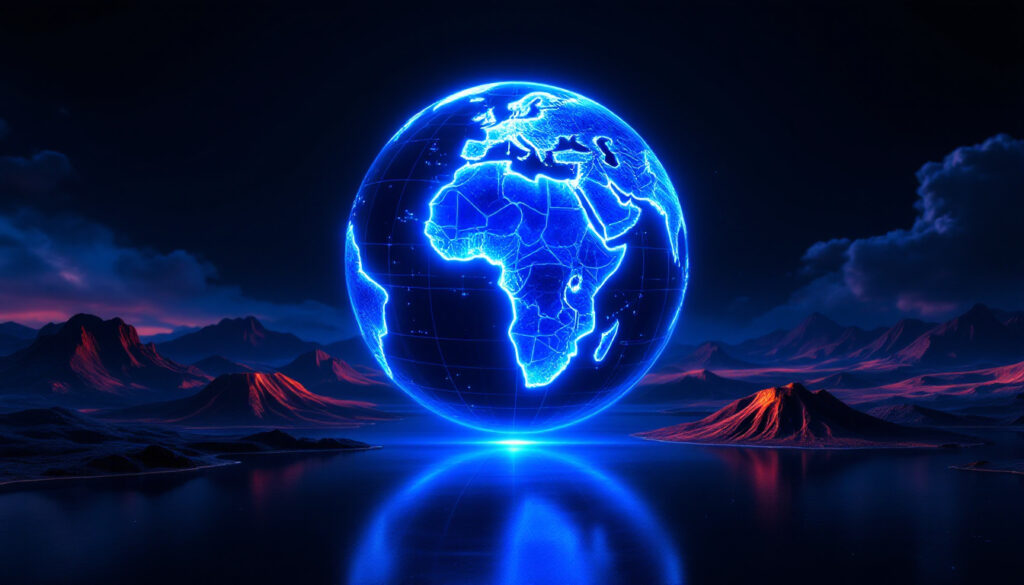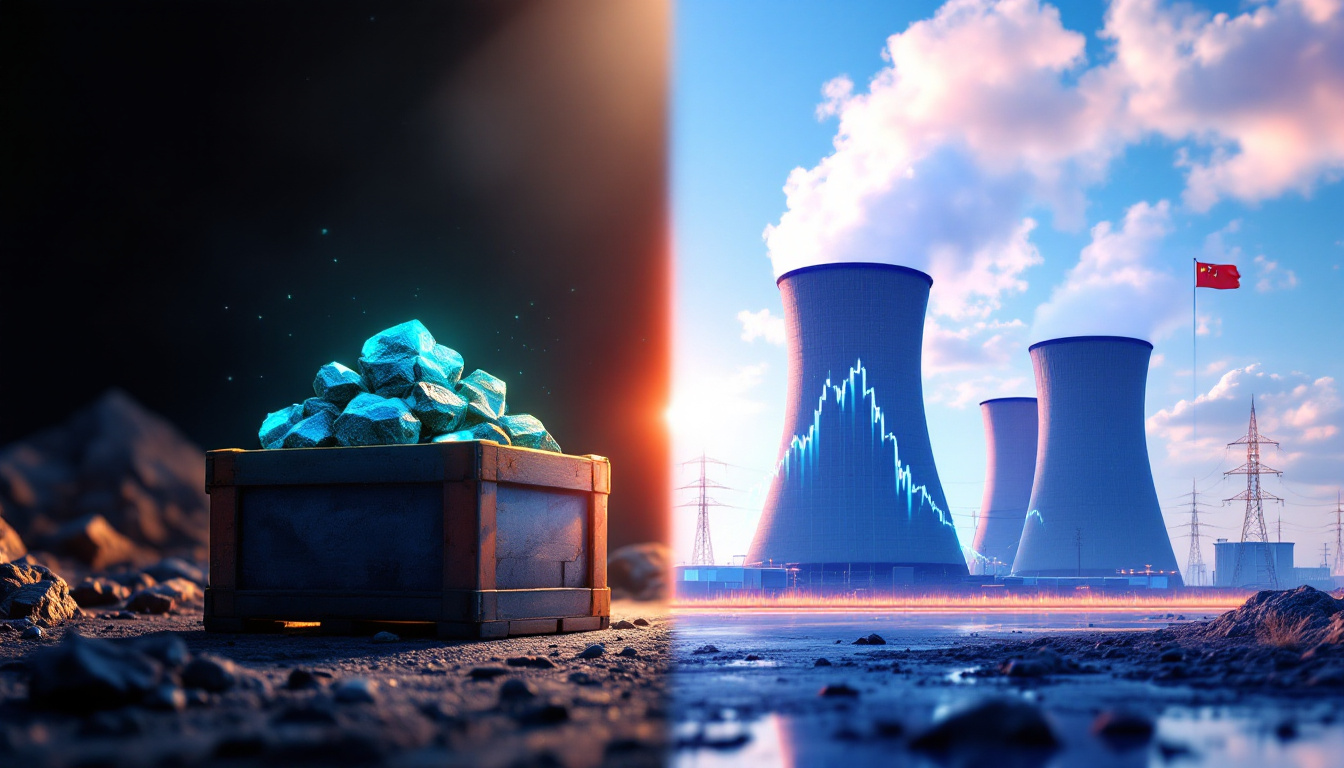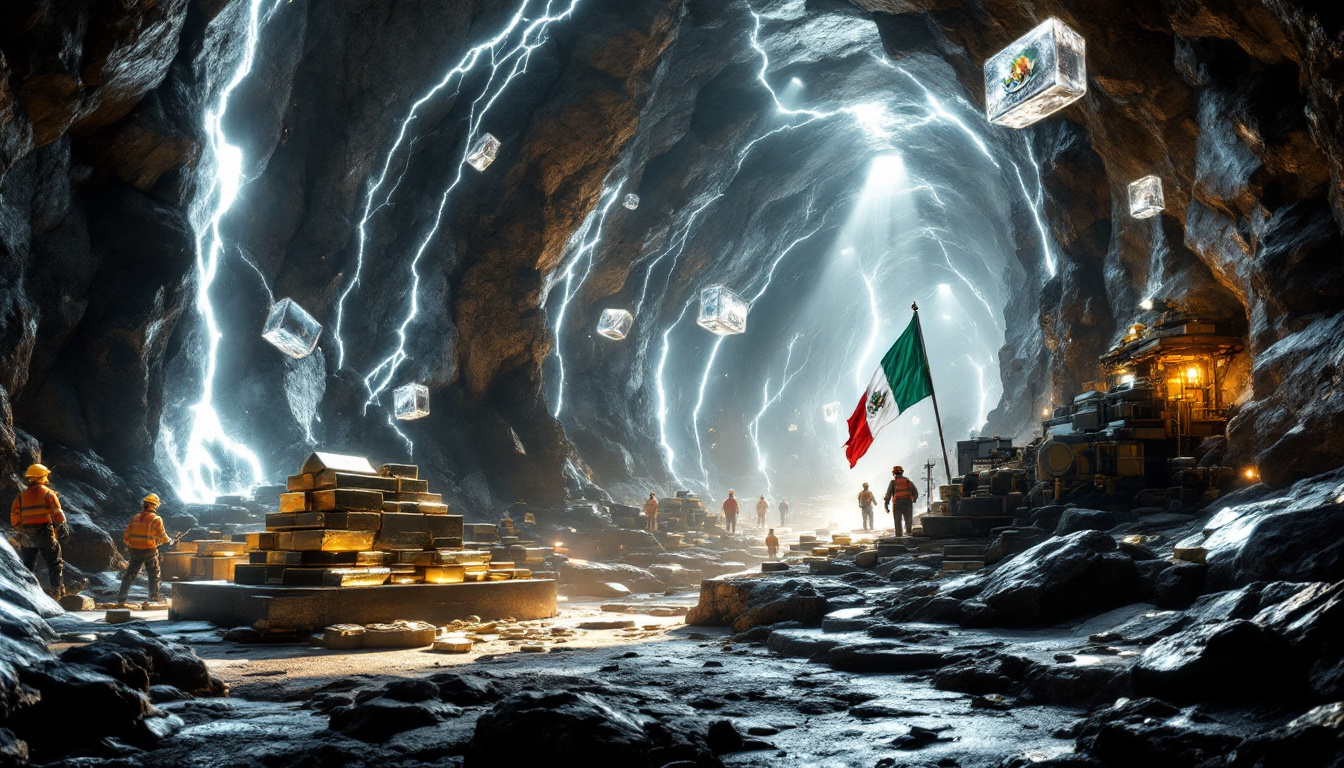Cobalt Reserves by Country 2025: Global Distribution and Strategic Importance
The global distribution of cobalt reserves represents one of the most strategically important mineral allocations in the modern economy. As a critical component in lithium-ion batteries powering electric vehicles and renewable energy storage systems, cobalt's geopolitical significance continues to grow exponentially. This analysis examines the current state of global cobalt reserves by country in 2025, highlighting key producing nations and emerging market dynamics.
Global Cobalt Reserve Distribution
The Democratic Republic of Congo (DRC) maintains its dominant position in global cobalt reserves, holding an estimated 6,000,000 metric tons—representing over 50% of the world's supply. This concentration of resources in a single nation creates significant supply vulnerabilities for industries dependent on this critical metal.
Australia ranks second with approximately 1,700,000 metric tons, accounting for roughly 20% of global reserves. This positioning has strengthened Australia's strategic importance in mineral supply chains, particularly as manufacturers seek diversification away from DRC-sourced materials.
Indonesia and Cuba each possess 500,000 metric tons of cobalt reserves, positioning them as significant secondary suppliers. The Philippines contains 260,000 metric tons, while Russia holds 250,000 metric tons and Canada maintains 230,000 metric tons.
The rest of the world collectively holds 780,000 metric tons, a notable increase from 610,000 tons reported in 2023. This expansion primarily stems from new discoveries and improved measurement techniques rather than the emergence of entirely new deposits.
What Makes the DRC the World's Cobalt Powerhouse?
The DRC's unparalleled cobalt wealth centers around the mineral-rich Katanga region, where geological conditions created exceptionally high-grade deposits over millions of years. Unlike most cobalt reserves globally, which exist as secondary products in nickel or copper mining operations, the DRC's deposits feature extraordinary cobalt concentrations, often exceeding 1.5% grade compared to the global average of 0.3%.
Major producers operating in the region include multinational mining giant Glencore and the state-owned Gecamines. Together, these companies control approximately 65% of the country's operational cobalt production capacity.
In a significant strategic shift, the DRC government is planning a state-backed organization to consolidate control over mining rights. This initiative aims to nationalize revenue streams from cobalt resources and strengthen the government's negotiating position with international mining corporations. The move follows similar resource nationalization trends in lithium-producing nations like Chile and Bolivia.
Current extraction methods in the DRC include both large-scale industrial operations and artisanal mining. The latter remains controversial due to documented human rights concerns, including child labor and unsafe working conditions. Despite these challenges, artisanal mining accounts for approximately 20-30% of the country's cobalt output.
Australia's Growing Cobalt Potential
Australia's position as the second-largest cobalt reserve holder at 1.7 million metric tons represents a strategic counterbalance to the DRC's market dominance. Unlike the DRC, Australian cobalt occurs primarily as a byproduct of nickel mining, particularly in Western Australia's lateritic nickel deposits.
The country has established a significant partnership with Glencore for combined nickel-cobalt extraction, implementing advanced hydrometallurgical processing techniques that achieve higher recovery rates than conventional methods. This technological edge has boosted Australia's production efficiency by approximately 18% since 2020.
Several new mining project developments are under consideration, including the Broken Hill Cobalt Project in New South Wales, which could potentially add 3,500-4,000 tons of annual cobalt production capacity by 2027. The economic impact of cobalt mining on the Australian economy generates an estimated $1.2 billion annually in direct contribution to GDP, with approximately 7,800 jobs directly linked to cobalt extraction and processing.
Australia's advantage lies in its political stability, transparent regulatory framework, and commitment to ethical sourcing—factors increasingly valued by manufacturers seeking to establish ESG-compliant supply chains. Furthermore, the country has been addressing numerous ESG challenges and opportunities in mining to maintain its competitive position.
How Do Indonesia and Cuba Compare as Cobalt Sources?
Indonesia and Cuba maintain identical reserve levels at 500,000 metric tons each, though their production capacities and extraction methodologies differ significantly.
Cuba's cobalt production centers around the Moa region, where cobalt occurs alongside nickel in lateritic deposits. The country's annual production reached 3,600 tonnes in 2020, representing approximately 2.5% of global output. The primary operator, Sherritt International, operates through a joint venture with General Nickel Company of Cuba, employing pressure acid leaching technology to process the ore.
Indonesia's emerging role in global cobalt markets has strengthened considerably since 2023, when the country implemented policies restricting the export of unprocessed nickel ore. This strategic move has accelerated domestic refining capacity development, including cobalt recovery operations. Indonesia's geological advantage lies in its extensive lateritic nickel deposits across Sulawesi and surrounding islands, where cobalt grades average 0.08-0.15%.
While both countries possess identical reserve volumes, Indonesia's aggressive infrastructure development and proximity to Asian manufacturing hubs position it more advantageously for future market growth. This growth is also being supported by funding boost for North American EV battery supply chains that seek to diversify sources beyond traditional suppliers.
Secondary Cobalt Reserve Countries: Philippines, Russia, and Canada
The Philippines holds 260,000 tonnes of cobalt reserves, representing approximately 4% of global supply. The country's production primarily comes from nickel laterite operations on Palawan Island and the northeastern region of Luzon. As the world's 4th largest producer in 2020, the Philippines extracted approximately 4,300 tonnes of cobalt.
Russia maintains 250,000 tonnes of reserves, with Siberia serving as the key mining region. Russian production reached 6,300 tonnes in 2020, ranking the country as the world's 2nd largest producer. The primary cobalt producer, Norilsk Nickel, extracts the metal as a byproduct from its massive copper-nickel operations in the Arctic Circle, where ore grades average 0.17% cobalt.
Canada's 230,000 tonnes of reserves (3% of global total) are distributed across Ontario, Manitoba, and Newfoundland provinces. The country's production model differs from other major producers, with cobalt often associated with copper-nickel sulfide deposits rather than lateritic formations. This geological distinction necessitates different processing techniques but generally yields higher-grade material with cobalt concentrations sometimes exceeding 0.4%.
Emerging Cobalt Reserve Nations
Several nations with smaller but strategically significant cobalt reserves are gaining importance in global markets as diversification efforts accelerate.
Madagascar possesses approximately 100,000 metric tons of cobalt reserves, primarily concentrated in the Ambatovy lateritic nickel-cobalt deposit. Operating since 2012, this project represents one of Africa's largest mining investments outside the DRC, with production capacity reaching 5,600 tonnes of cobalt annually at peak operation.
Turkey has emerged as a surprise entrant in global cobalt reserves with 91,000 metric tons identified through intensive exploration efforts since 2019. The country's deposits, primarily located in the Black Sea region, remain largely undeveloped but could position Turkey as a significant European supplier within the decade.
The United States holds 69,000 metric tons of cobalt reserves, primarily in Idaho and Minnesota. The Idaho Cobalt Operations project, developed by Jervois Global, represents the only primary cobalt mine in the United States, with production commencing in 2022. This project holds strategic significance for U.S. supply chain security, though its output remains modest compared to global leaders. Recent developments regarding US cobalt miner tariffs and their market impact may further influence the country's position in the global market.
Papua New Guinea's 49,000 metric tons of cobalt reserves are primarily associated with the Ramu nickel-cobalt mine, which utilizes high-pressure acid leaching technology. The operation, majority-owned by Chinese interests, produces approximately 3,300 tonnes of cobalt annually, primarily for Asian markets.
How Are Cobalt Reserves Measured and Reported?
The methodology behind cobalt reserve calculations involves sophisticated geological assessment combining core sampling, geophysical surveys, and statistical modeling. The industry distinguishes between "reserves" (economically extractable under current conditions) and "resources" (potentially valuable but not necessarily economically viable).
Technological advancements have significantly impacted reserve estimates, with improvements in processing efficiency effectively converting previously uneconomic resources into viable reserves. For example, new bioleaching techniques have improved recovery rates by up to 22% for certain ore types, effectively expanding accessible reserves without new discoveries.
Reporting standards vary across different countries, with most major mining jurisdictions following either the JORC Code (Australia), NI 43-101 (Canada), or SAMREC (South Africa). These frameworks provide standardized definitions but allow for interpretation differences that can complicate cross-country comparisons.
Reserve totals frequently increase despite ongoing extraction due to three primary factors: new discoveries, reclassification of resources to reserves as economic conditions change, and improved recovery technologies that make previously unrecoverable deposits viable. According to the Cobalt Institute, these factors collectively contribute to the overall sustainability of global cobalt supplies.
Strategic Importance of Cobalt in Global Markets
Cobalt serves as a critical component in lithium-ion batteries, providing thermal stability and extending battery life. Approximately 65% of global cobalt production now feeds battery manufacturing, up from 25% in 2010, reflecting the metal's pivotal role in energy transition technologies.
Applications extend beyond electric vehicles into renewable energy storage systems, where cobalt-containing batteries facilitate grid integration of intermittent power sources like solar and wind. The aerospace industry also requires cobalt for superalloys used in jet engines, where high-temperature performance is essential.
Supply chain concerns have intensified as demand projections indicate potential shortages by 2030. Current estimates suggest cobalt demand could reach 270,000 tonnes annually by 2030—a 127% increase from 2020 levels—driven primarily by electric vehicle battery production.
Price fluctuations reflect these supply-demand dynamics, with cobalt prices surging to over $40/lb in 2018 before stabilizing between $15-25/lb in recent years. Market analysts project renewed price pressure as battery manufacturers compete for available supply against aerospace and other industrial consumers. This market pressure is further impacted by mining's critical role in the clean energy transition, creating additional demand pressure.
Environmental and Social Considerations in Cobalt Mining
Sustainability challenges in major producing regions vary significantly, with the DRC facing the most severe environmental and social impacts. Artisanal mining in the country's southern regions has resulted in deforestation, water contamination, and documented human rights concerns.
Ethical sourcing initiatives and certifications have emerged in response, with the Responsible Minerals Assurance Process and Cobalt for Development Project establishing traceability and accountability frameworks. Major technology companies including Apple, Tesla, and Samsung have committed to sourcing only verified conflict-free cobalt, creating market pressure for improved practices.
Community impact in mining regions presents a complex picture. While formal mining operations generate employment and economic development, benefits often fail to reach communities most affected by environmental degradation. In the DRC, approximately 40,000 children work in artisanal cobalt mining, highlighting persistent social challenges despite formalization efforts.
Environmental practices vary dramatically across key producing countries. Australia and Canada maintain strict regulatory oversight with mandated rehabilitation and waste management protocols. In contrast, smaller producers and artisanal operations often lack resources or incentives for environmental protection, resulting in acid mine drainage and heavy metal contamination.
FAQs About Global Cobalt Reserves
Why is the DRC so dominant in global cobalt reserves?
The DRC's geological advantage stems from the Central African Copperbelt formation, where tectonic activity and mineral-rich fluids created uniquely concentrated deposits over 500 million years ago. These formations contain cobalt concentrations 5-7 times higher than typical global deposits.
How might geopolitical tensions affect access to cobalt reserves?
Resource nationalism poses the most significant threat to supply stability, particularly as producer countries recognize cobalt's strategic value. The DRC's proposed state control mechanisms could potentially restrict output or impose export quotas, while Western sanctions against Russia have already disrupted normal trading patterns for Russian cobalt. Additionally, How Trump's policies are reshaping global commodity markets adds another layer of complexity to this geopolitical landscape.
What technological developments might reduce dependence on cobalt?
Several battery chemistries under development aim to reduce or eliminate cobalt content. Lithium iron phosphate (LFP) batteries already offer cobalt-free alternatives with lower energy density but improved safety profiles. Solid-state battery technology using alternative cathode materials could potentially eliminate cobalt requirements entirely by 2030-2035.
How are cobalt reserves expected to change by 2030?
Projections suggest global reserves will remain relatively stable in absolute terms but may shift in relative distribution. Intensive exploration in Australia, Canada, and several African nations could potentially add 800,000-1,200,000 tonnes to global reserves by 2030, reducing the DRC's proportional dominance.
What countries are investing most heavily in cobalt exploration?
Australia leads exploration investment with approximately $420 million allocated to cobalt-specific projects between 2020-2025. Canada follows with $280 million in exploration funding, while Brazil, Morocco, and Kazakhstan have recently increased exploration budgets specifically targeting cobalt-bearing formations. According to Investing News Network, these exploration efforts are critical for future supply stability.
Want To Capitalise On Cobalt Discoveries?
Discovery Alert provides real-time alerts for major ASX mineral discoveries through its Discovery IQ model, simplifying complex data into clear, actionable insights. Explore historic returns from significant discoveries on our dedicated discoveries page and begin your 30-day free trial to gain a competitive edge in the market.




